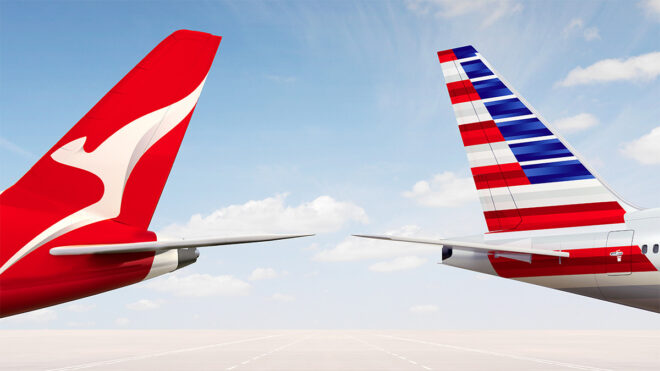
American Airlines and Qantas have recently announced significant expansions in their trans-Pacific flight offerings, enhancing connectivity between the United States and Australia. These developments reflect a strategic response to growing demand for direct international travel and mark a pivotal moment in the aviation industry.
—
American Airlines’ New Dallas–Brisbane Route
In October 2024, American Airlines inaugurated its first-ever direct service between Dallas-Fort Worth International Airport (DFW) and Brisbane Airport (BNE). Operating with Boeing 787-9 Dreamliner aircraft, this route stands as the longest in American’s network, covering nearly 16 hours of flight time. Initially offered five times weekly, the service expanded to daily flights from December through March to accommodate peak travel seasons .
This new route not only enhances travel options for passengers but also supports economic growth. It’s projected to bring up to 62,000 international visitors and $113 million to Queensland over three years, creating approximately 690 jobs . Additionally, each outbound flight can carry up to 18 tonnes of freight, facilitating exports of Queensland products like beef, seafood, and cosmetics.
—
Qantas’ Expansion and Fleet Enhancements
Qantas is also expanding its international network, adding approximately 220,000 seats over 12 months starting February 2025. This includes a 13% increase in capacity to the United States and a 30% boost in premium seating, facilitated by the return of Airbus A380s and the introduction of Boeing 787 Dreamliners on routes such as Brisbane–Los Angeles .
The airline is preparing for its ambitious “Project Sunrise,” set to launch in early 2027. This initiative will introduce ultra-long-haul flights from Sydney to London and New York, utilizing Airbus A350-1000 aircraft. These flights, lasting up to 19 hours, aim to redefine long-distance travel with enhanced passenger comfort and efficiency .
—
Strengthening the American–Qantas Partnership
The collaboration between American Airlines and Qantas continues to flourish, offering one of the most comprehensive networks connecting North America with Australia and New Zealand. Through their joint business, customers can access over 200 destinations in the U.S. and nearly 70 across Australia, New Zealand, and the South Pacific .
This partnership also includes expanded codeshare agreements, allowing for seamless travel experiences and enhanced frequent flyer benefits. Passengers can earn and redeem miles across both airlines’ networks, enjoy priority services, and access exclusive lounges .
—
Implications for Travelers and the Aviation Industry
These expansions signify a robust recovery and growth in international air travel, particularly between the U.S. and Australia. For travelers, the increased flight options mean more flexibility, reduced travel times, and improved comfort. For the aviation industry, these developments highlight the importance of strategic partnerships and fleet modernization in meeting evolving passenger demands.
As airlines continue to adapt to post-pandemic travel trends, the focus on direct, long-haul flights with enhanced onboard experiences is likely to shape the future of international air travel.